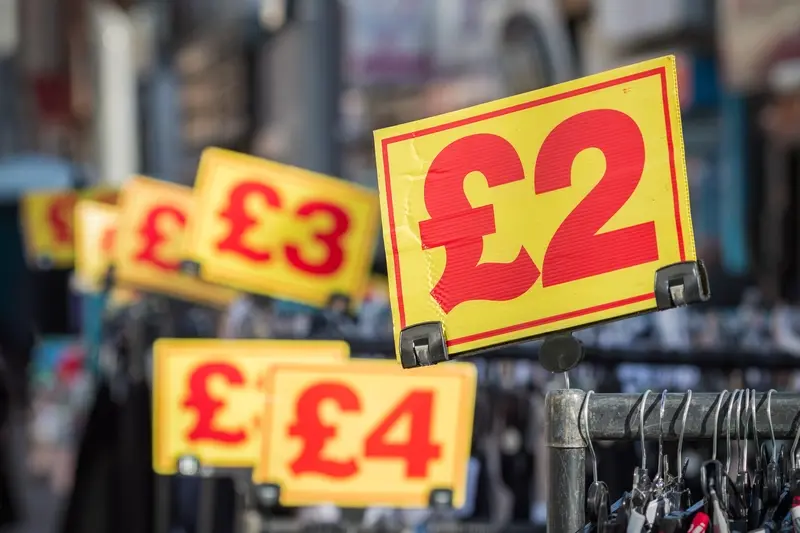What's The Break-Even Point For Most Business Apps?
A startup founder came to me last year with a brilliant idea for a business mobile app. She'd mapped out every feature, designed the user interface, and even secured some initial funding. But when I asked her one simple question—"When will this app actually make money?"—she went quiet. After months of planning, she hadn't worked out her break-even point. Sound familiar?
You're not alone if financial planning for your mobile app feels overwhelming. Most business owners focus on building something amazing (which is great!) but forget to calculate when their investment will pay off. The truth is, without understanding your break-even point, you're flying blind.
Every successful mobile app needs a clear path to profitability, not just a great idea
This guide will walk you through everything you need to know about app profitability—from development costs to revenue models, and most importantly, how to calculate when your business app will start making money rather than spending it. We'll look at real industry benchmarks, common financial planning mistakes, and give you practical tools to plan your app's financial future. By the end, you'll have a clear roadmap to profitability that actually works.
Understanding App Development Costs
After years of building apps for everything from corner shops to multinational corporations, I can tell you that development costs vary wildly—and I mean wildly. I've seen simple apps cost £15,000 and complex ones reach £200,000 or more. The difference comes down to what you're actually building.
Most business owners think an app is just an app, but that's like saying all cars are the same. A basic informational app with a few screens costs much less than something with user accounts, payment processing, and real-time features. The complexity of your backend systems makes a huge difference too.
Main Cost Categories
- Design and user experience work (usually 15-25% of total cost)
- Development for iOS and Android platforms
- Backend systems and databases
- Third-party integrations and APIs
- Testing across different devices
- App store submission and approval process
Don't forget the ongoing costs either—app store fees, hosting, maintenance updates, and bug fixes. These typically run 15-20% of your initial development cost each year. One CEO I worked with recently was shocked to learn his £50,000 app would need another £8,000 annually just to keep running smoothly.
Revenue Models for Business Apps
Getting your revenue model right from the start can make or break your mobile app's financial planning. I've worked with countless business owners who've built brilliant apps but struggled with profitability simply because they picked the wrong way to make money from them.
The freemium model works well for apps that solve ongoing business problems—think project management or communication tools. You offer basic features for free, then charge for premium functionality. This approach helps with user acquisition but requires patience; it often takes months before users convert to paid plans.
Subscription vs One-Time Payment
Monthly subscriptions provide predictable revenue streams, which makes financial planning much easier. Most successful business apps I've developed use this model because it aligns with how companies budget for software. One-time payments might seem appealing to users initially, but they make it harder to fund ongoing development and support.
Enterprise and Licensing Options
Don't overlook enterprise licensing if your app has broad business appeal. Selling bulk licences to large organisations can dramatically improve your path to profitability—sometimes a single enterprise deal covers months of individual subscriptions.
Start with a simple revenue model you can execute well, rather than trying to combine multiple approaches from day one. You can always add more revenue streams later once you understand your users better.
Calculating Your Break-Even Point
Right, let's get down to the maths—don't worry, it's not as scary as it sounds! Your break-even point is simply when your app starts making enough money to cover what you spent building it. Think of it like this: if you spent £50,000 creating your app, you need to earn £50,000 back before you're truly in profit.
The basic formula is straightforward: divide your total development costs by your monthly revenue. So if your app cost £50,000 to build and you're making £2,500 per month, you'll break even in 20 months. Simple, right?
Don't Forget the Ongoing Costs
Here's where many business owners trip up—they only count the initial development cost. But your app needs feeding and watering after launch! You've got monthly server costs, app store fees, updates, bug fixes, and marketing expenses.
A project manager I worked with recently was shocked when I showed him his true monthly costs were £800, not the £200 he'd budgeted for. This is where budgeting for unexpected app maintenance costs becomes crucial for accurate financial planning:
- Server hosting and database costs
- Third-party service subscriptions
- App store commission fees
- Ongoing maintenance and updates
- Marketing and advertising spend
Once you've got your real monthly costs sorted, the break-even calculation becomes much more accurate—and often much longer than you first thought!
Factors That Affect Profitability
After years of working with businesses on their mobile app financial planning, I've noticed that profitability isn't just about having a great app—it's about understanding the moving parts that can make or break your bottom line. Some factors are obvious, others less so, but they all play a part in determining when your app will start making money.
Market Competition and User Acquisition
The biggest factor I see affecting app profitability is how crowded your market is. If you're launching a fitness app, you're competing with thousands of others; this means higher marketing costs and longer timeframes to build a user base. Understanding which app categories are most competitive can help inform your market entry strategy and budget expectations.
The most profitable apps aren't always the best ones; they're often just the ones that found their market at the right time with the right strategy
Ongoing Development and Maintenance
Something many business owners underestimate is the ongoing cost of keeping an app profitable. Bug fixes, OS updates, new features—these can eat into your profits if you don't budget properly. I've seen apps that were profitable in year one become loss-makers by year two because the owners didn't plan for these recurring expenses. Your hosting costs will also grow as your user base expands, which sounds good but needs careful management.
Industry Benchmarks and Timeframes
After working with dozens of business apps over the years, I can tell you that most apps don't follow a standard timeline to profitability. The numbers vary wildly depending on what your app actually does and who you're trying to reach.
That said, there are some patterns worth knowing about. Most successful business apps take between 12 to 24 months to hit their break-even point—assuming they get there at all. I've seen productivity apps break even in 8 months, whilst complex enterprise solutions sometimes take 3 years or more.
Typical Break-Even Timeframes by App Type
- Simple utility apps: 6-12 months
- Subscription-based productivity tools: 12-18 months
- E-commerce apps: 8-15 months
- Enterprise software: 18-36 months
- Marketplace apps: 24-48 months
The harsh reality is that about 60% of business apps never reach profitability. They either run out of funding or fail to find their market fit. The ones that do succeed often pivot their approach at least once before finding what works.
User acquisition costs have gone up significantly over the past few years, which means it takes longer to recoup your investment. What used to cost £2 per user now costs £5 or more in competitive categories, making referral programs and organic growth strategies more important than ever.
Common Mistakes in Financial Planning
After working with hundreds of businesses over the years, I've noticed the same financial planning mistakes crop up again and again when it comes to mobile app development. The biggest one? Being overly optimistic about how quickly users will find and download your app. I can't count how many times I've seen business owners assume they'll hit thousands of downloads in their first month—it rarely happens that way.
Another classic mistake is underestimating ongoing costs. Many people focus solely on the initial development price and forget about the monthly expenses that keep an app running smoothly. App store fees, hosting costs, updates, and bug fixes all add up; they're not optional extras, they're part of the package.
Build a 6-month financial buffer into your app budget from day one. This covers unexpected costs and gives you breathing room if user acquisition takes longer than expected.
The Most Expensive Oversights
Marketing budgets often get completely overlooked in initial financial planning. You can build the most brilliant app in the world, but if nobody knows it exists, it won't make you any money. Smart businesses typically allocate 20-40% of their total budget to marketing and user acquisition.
- Forgetting about app store commission fees (usually 30%)
- Not budgeting for regular updates and maintenance
- Expecting instant success without marketing spend
- Ignoring seasonal fluctuations in user behaviour
- Setting unrealistic revenue targets for year one
The importance of keeping users engaged once you've acquired them cannot be overstated—app engagement and retention strategies are crucial for long-term profitability and reducing your customer acquisition costs over time.
Conclusion
After eight years of building business apps, I can tell you that understanding your break-even point isn't just about crunching numbers—it's about making smart decisions before you spend a penny. Most business apps break even between 12 to 36 months, but that timeline depends entirely on how well you plan your costs and revenue streams.
The apps that succeed fastest are the ones where business owners have done their homework. They know their development costs down to the last pound, they've chosen a revenue model that fits their audience, and they've planned for ongoing expenses like hosting, updates, and marketing. More importantly, they haven't tried to build everything at once.
Starting with a minimum viable product and growing from there is still the smartest approach I've seen. It keeps your initial costs lower and gets you earning revenue sooner. The data you collect from real users will guide your next steps better than any business plan ever could.
Remember, breaking even is just the starting line—not the finish. Once you hit that point, you can reinvest in features that drive more users and higher revenue. That's when the real growth begins, and that's when your app transforms from an expense into a genuine business asset.
Share this
Subscribe To Our Learning Centre
You May Also Like
These Related Guides

What Are The Hidden Costs Of Working With Remote App Developers?

What Factors Affect Mobile App Development Cost In The UK Market?



